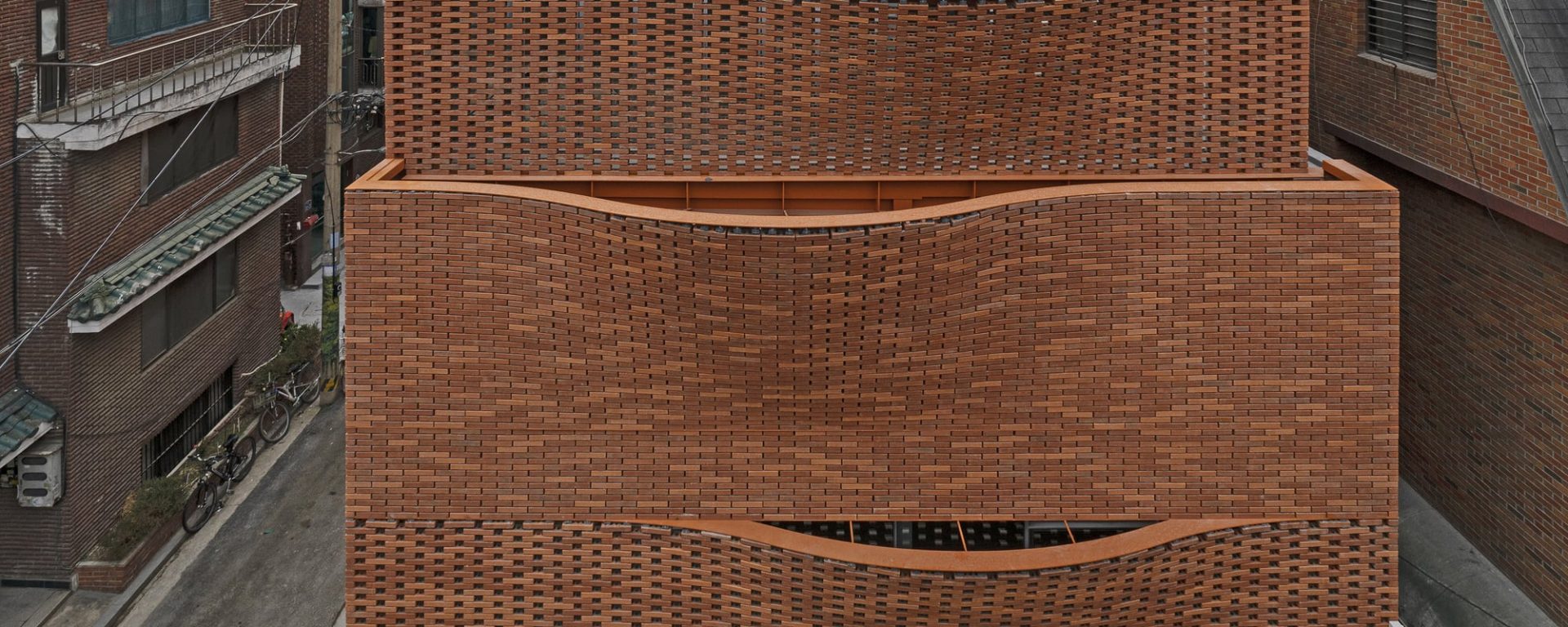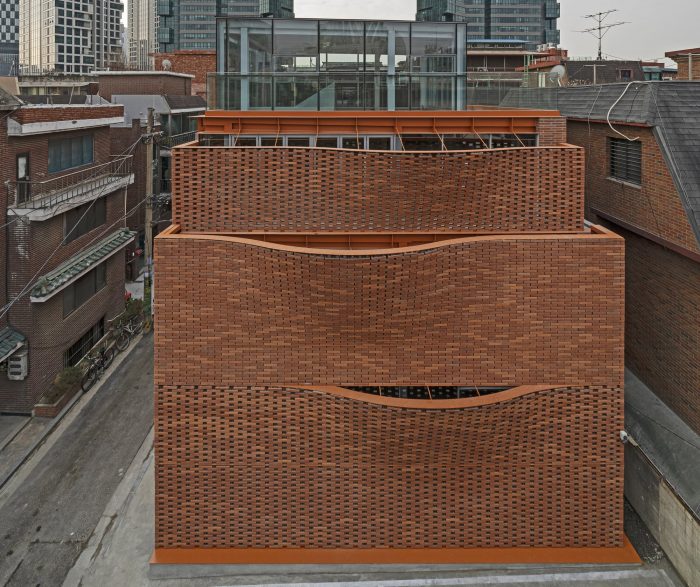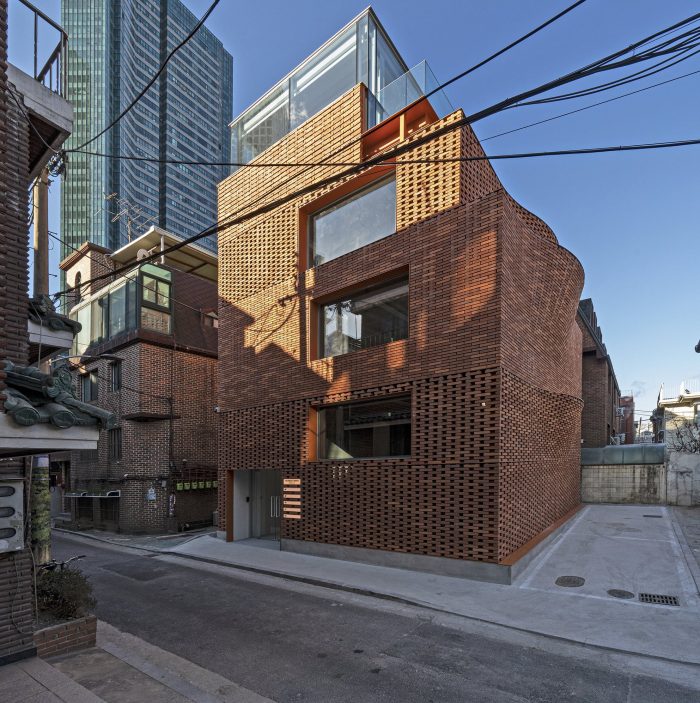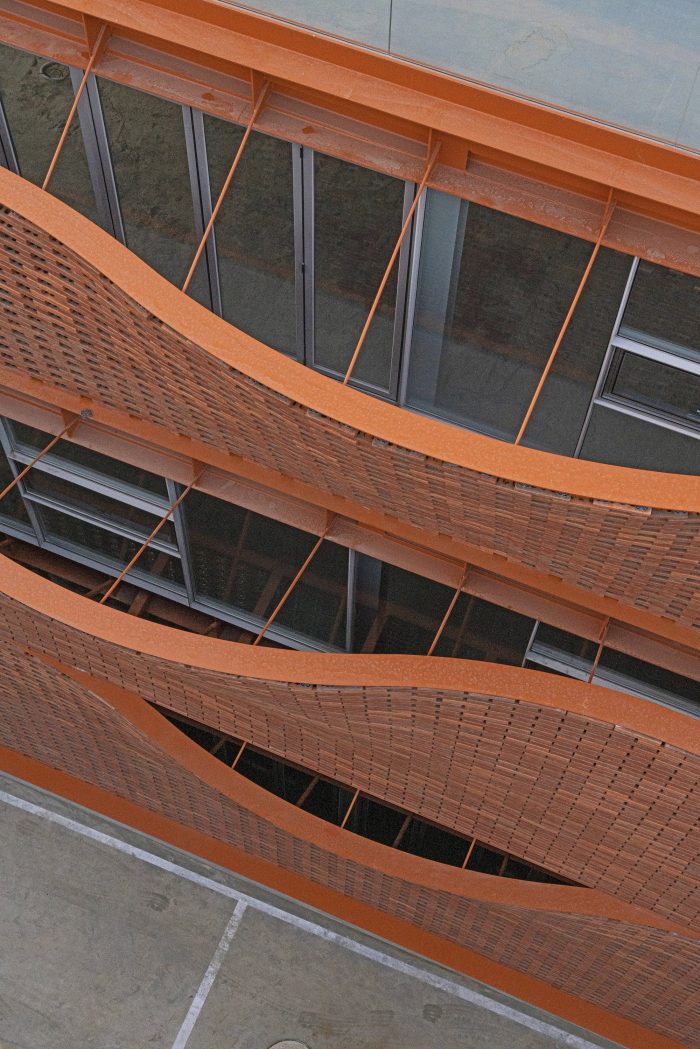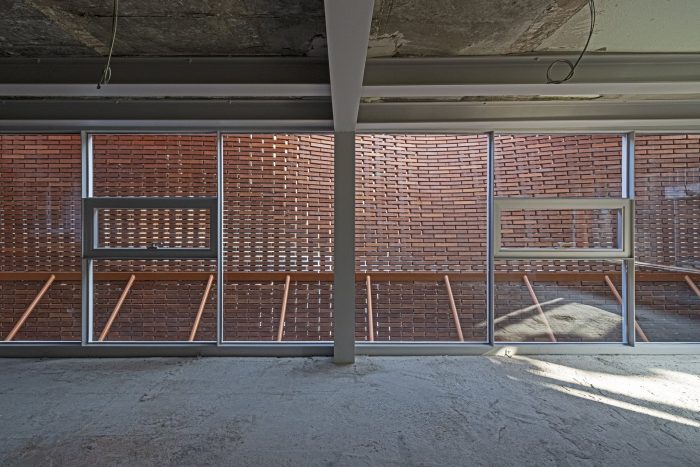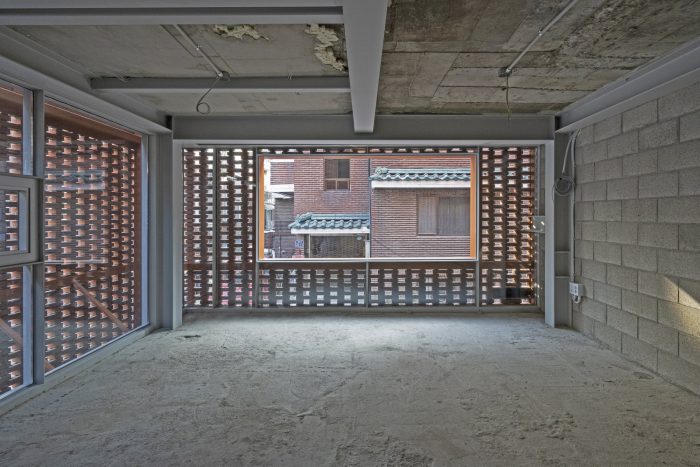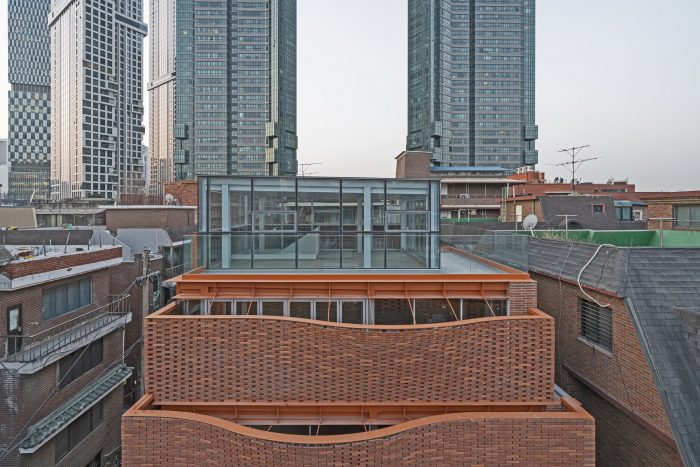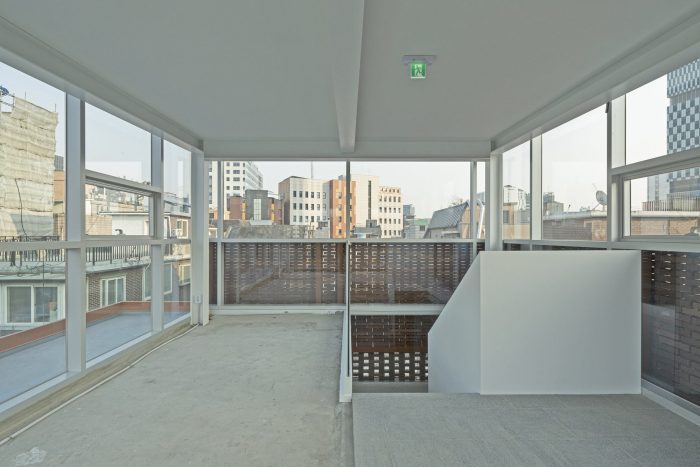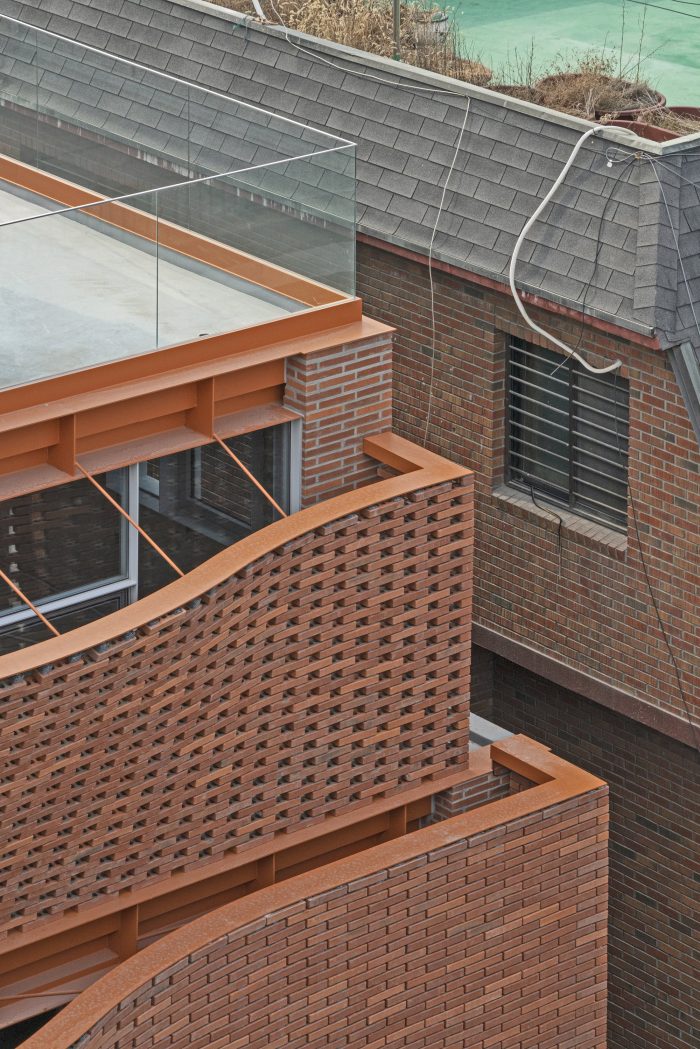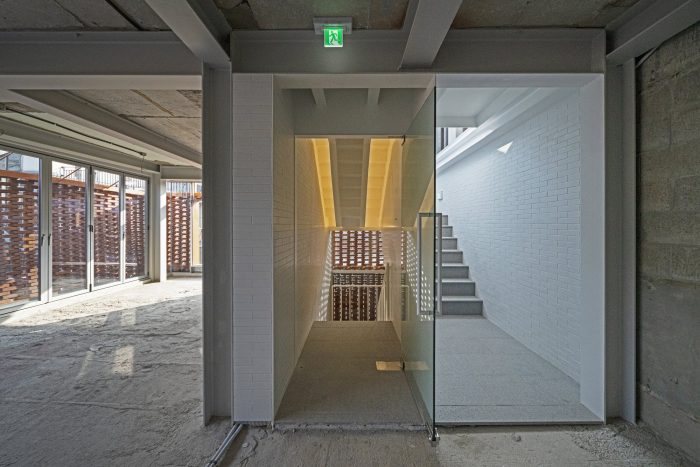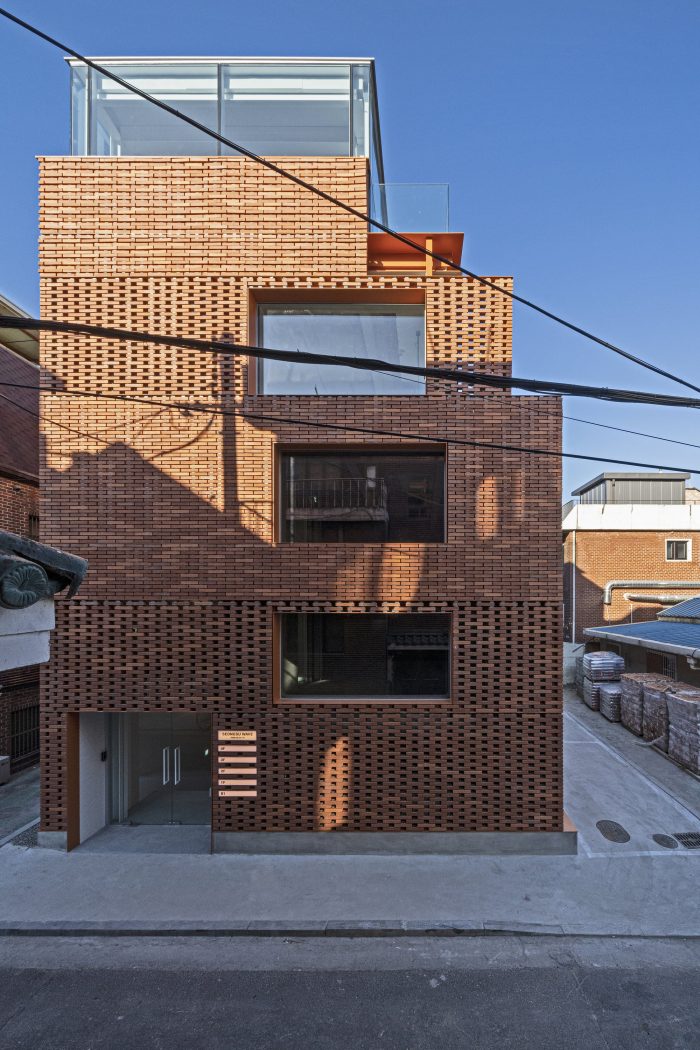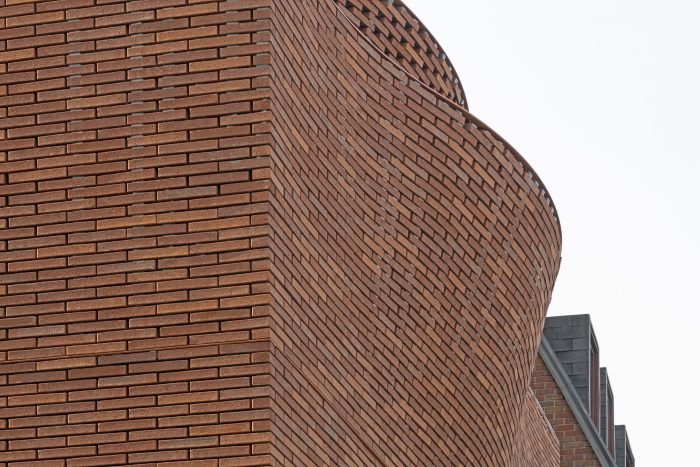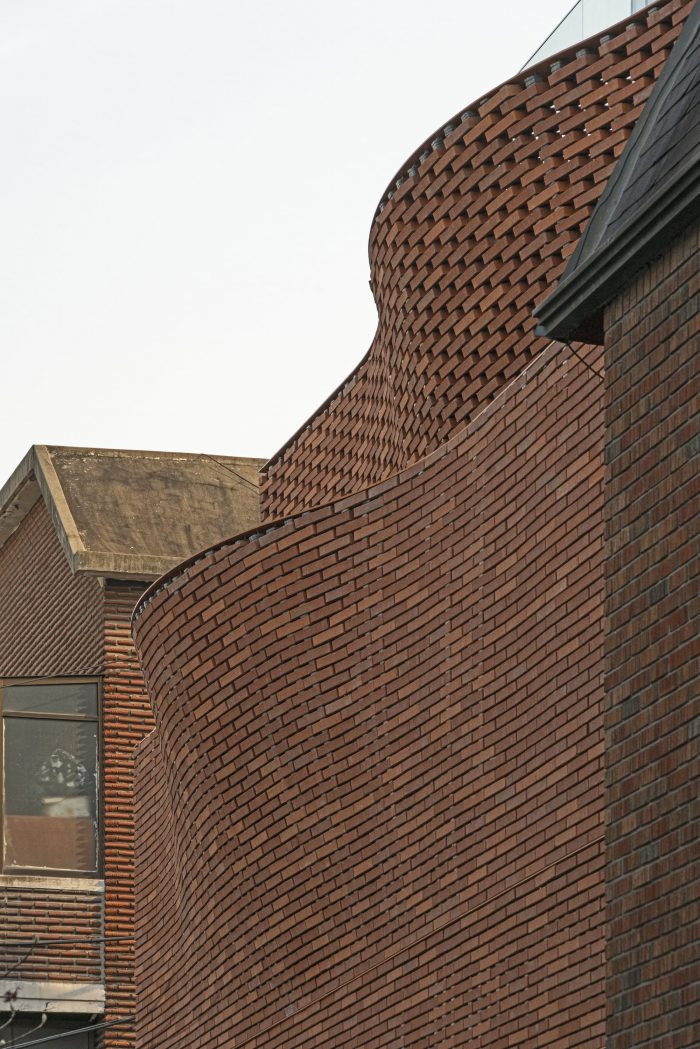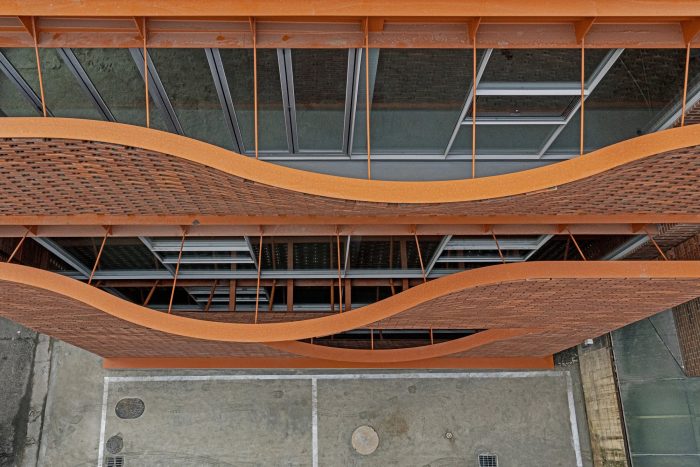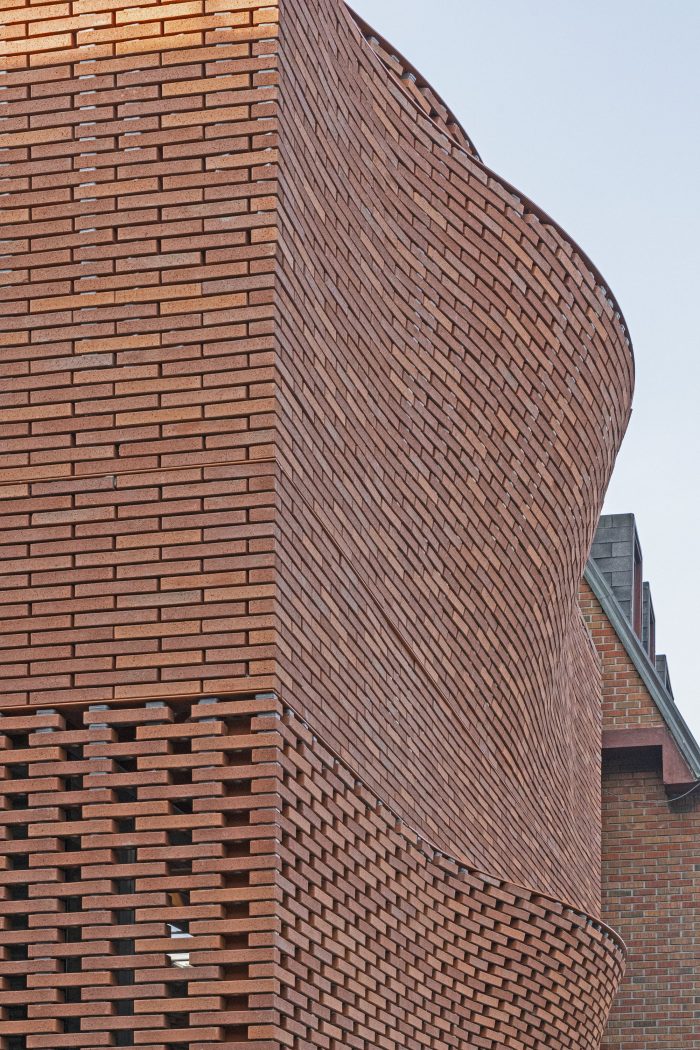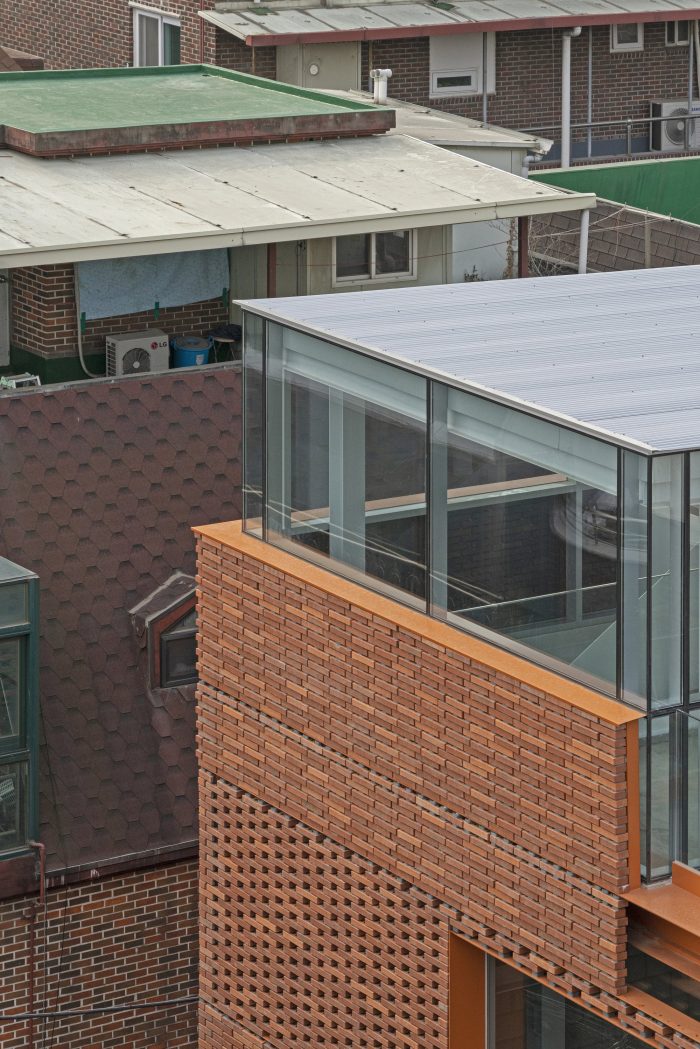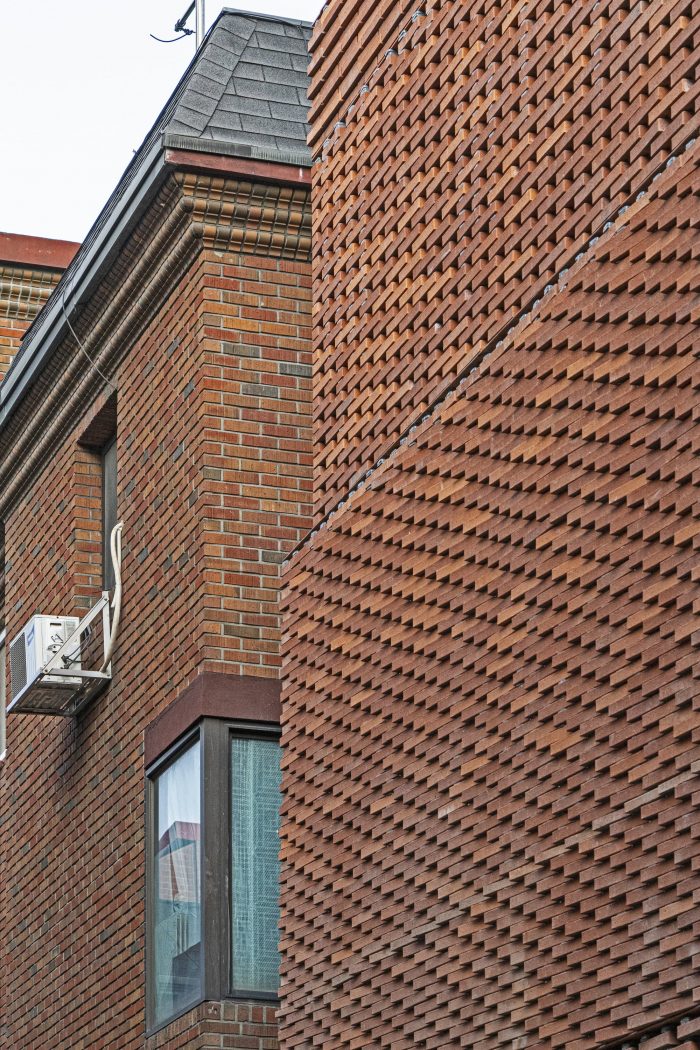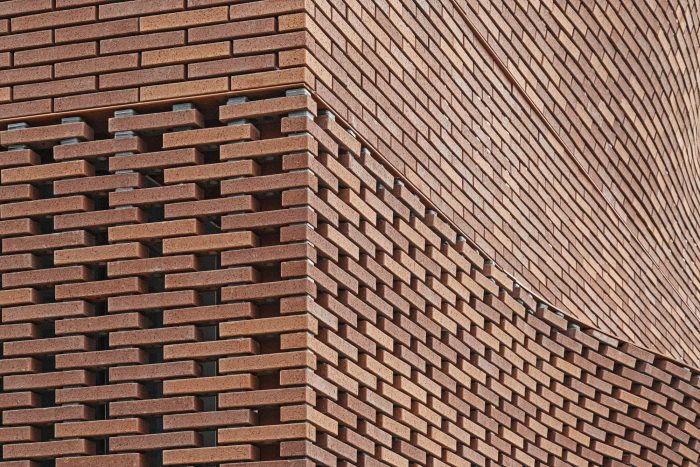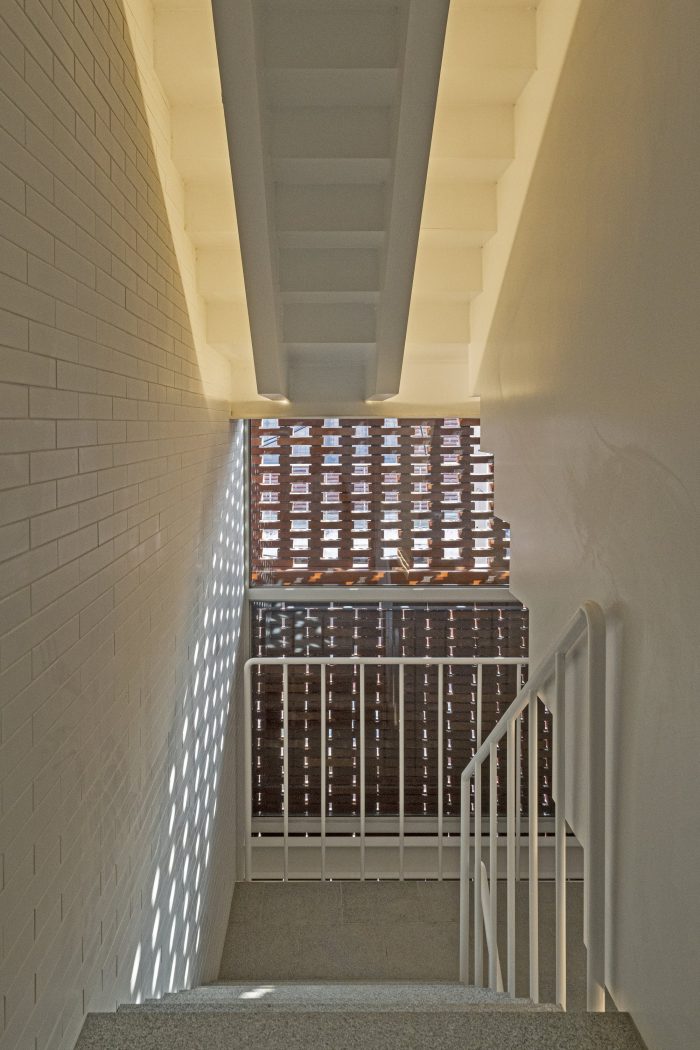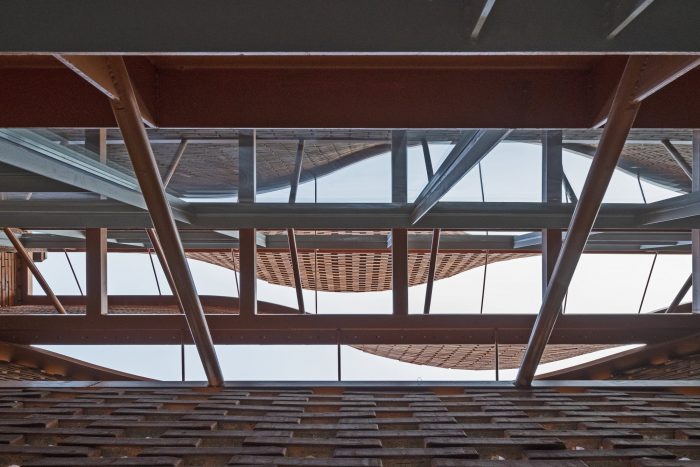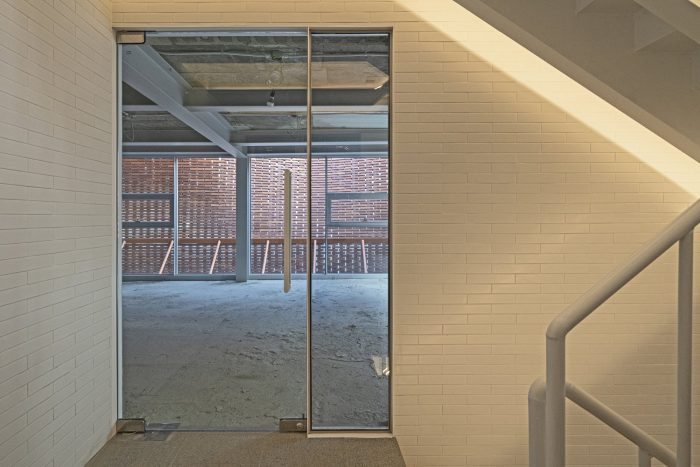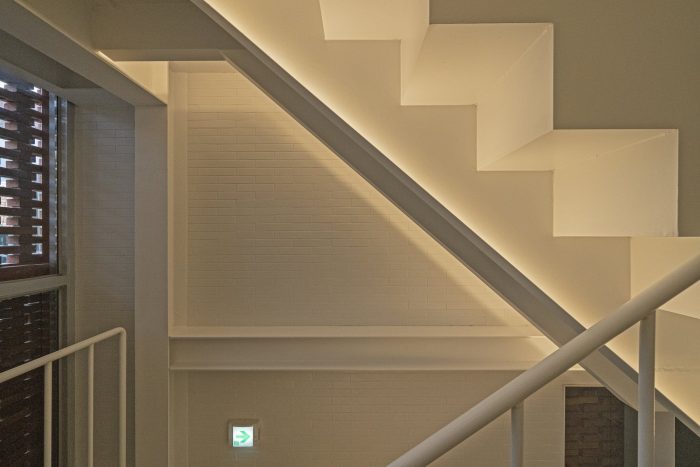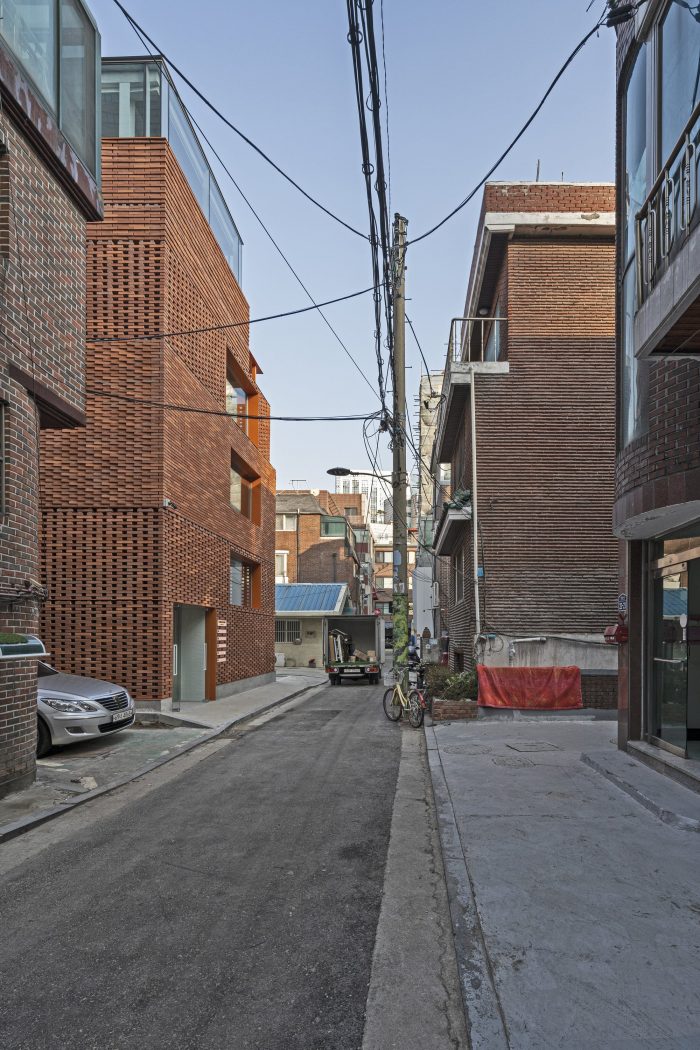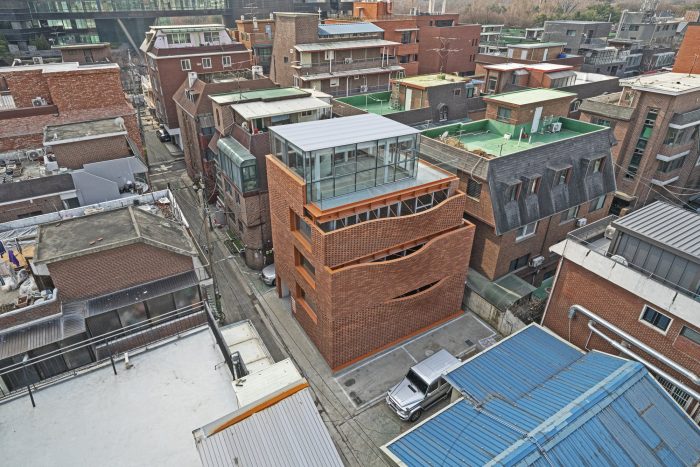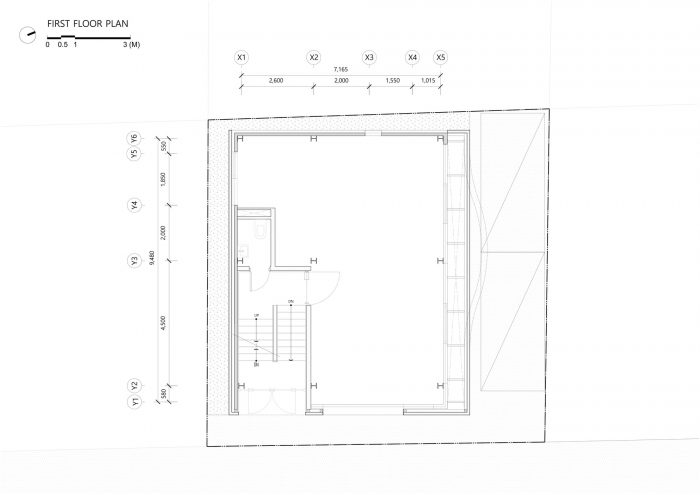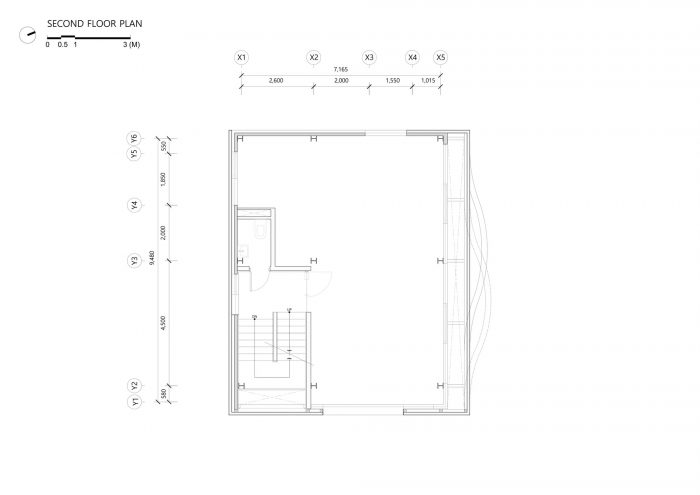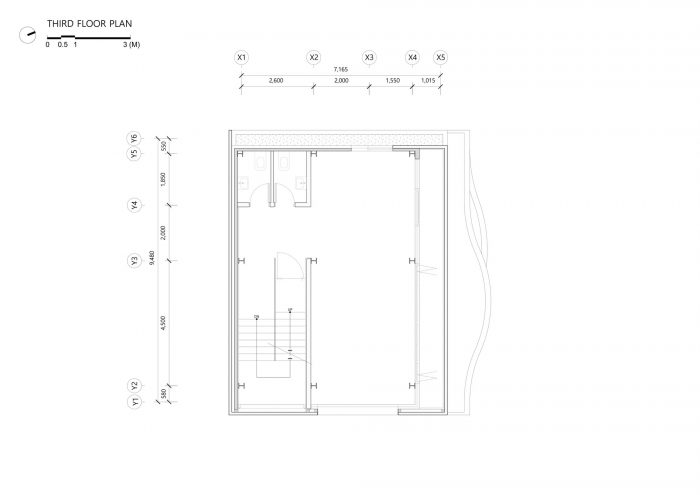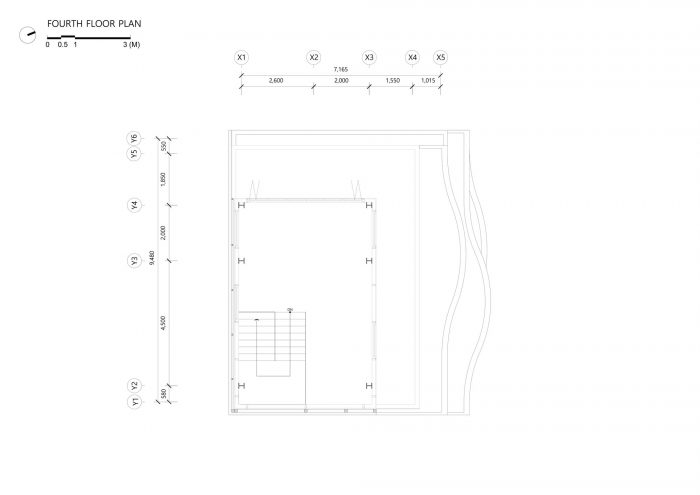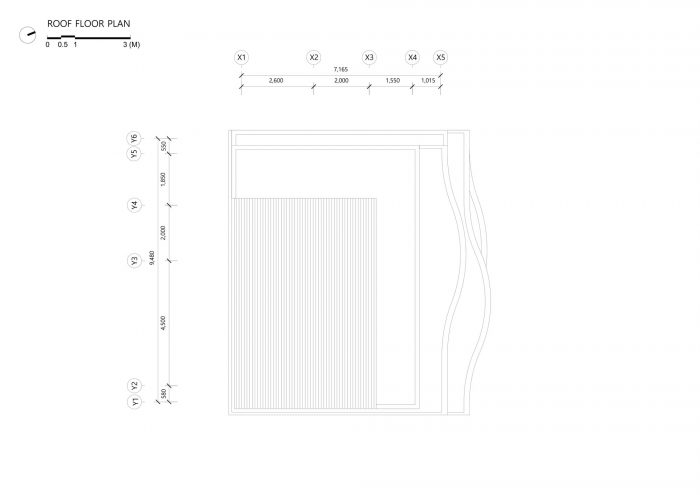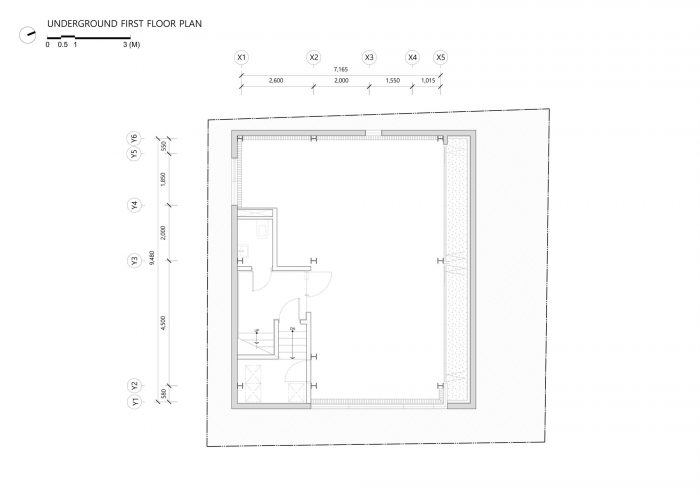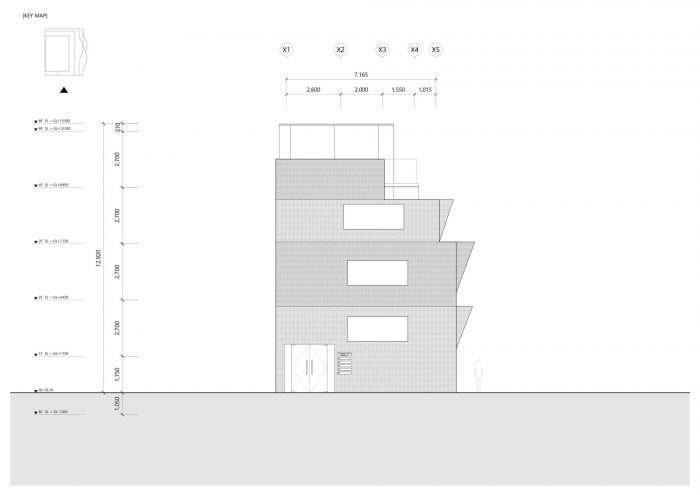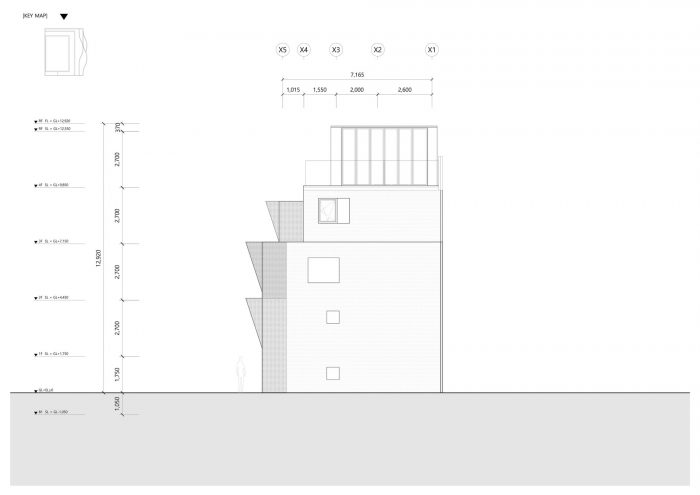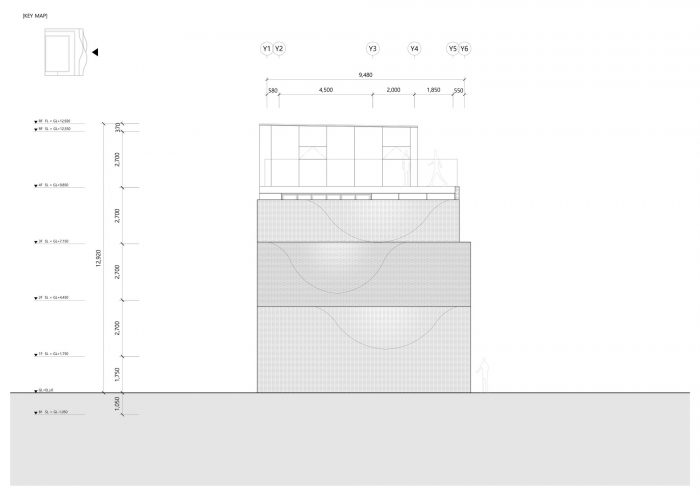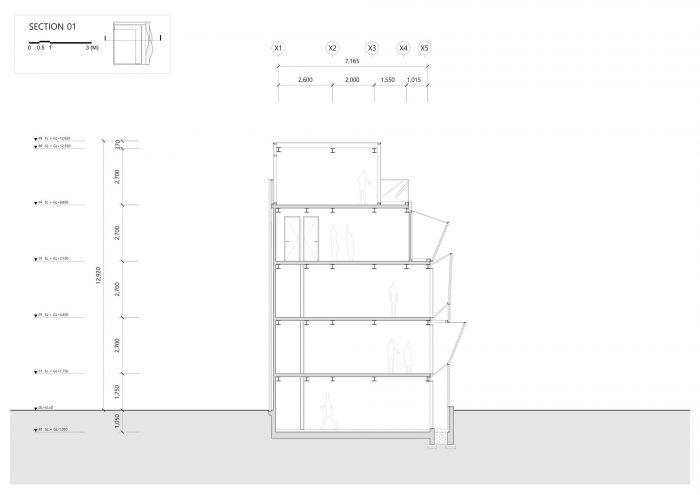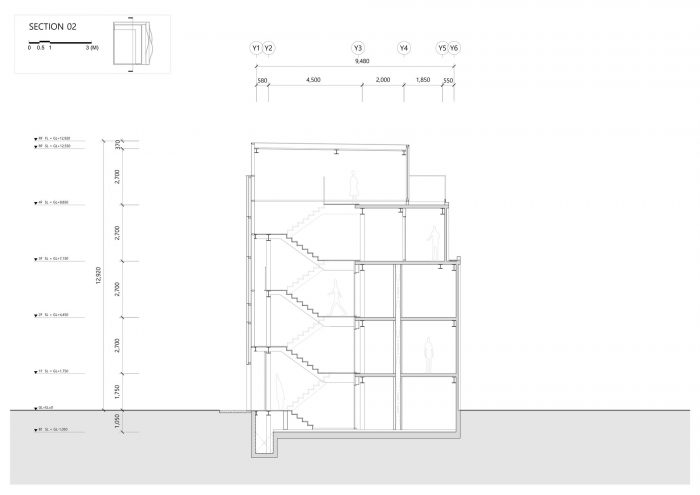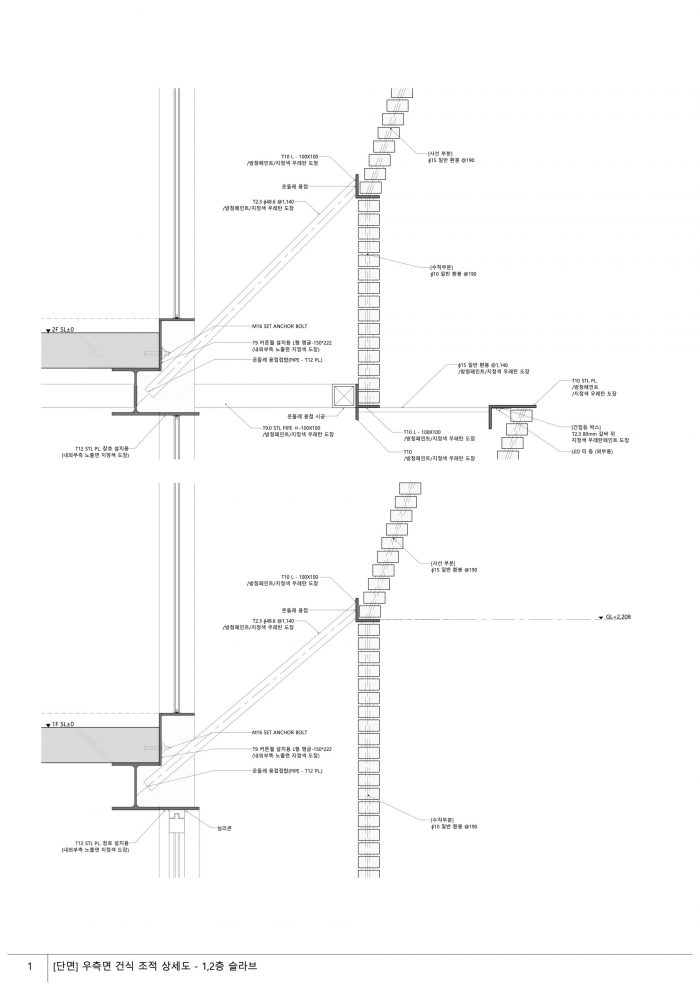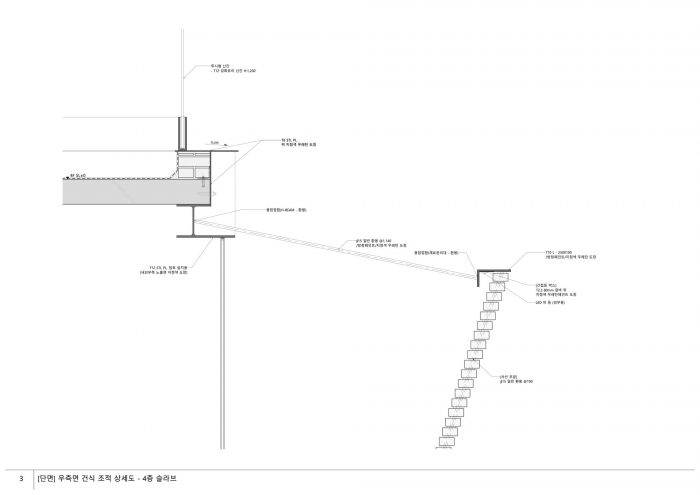2000年代初,随着首尔森林的开放,城须洞开始慢慢发生变化,它的价值在于对老街区的重新发现和维护。为了适应20世纪80年代和90年代首尔人口的增长,多单元、多家庭的住户被创造出来,以适应尽可能多的家庭。因此,从地下室到半地下室和地面的三维构成被创造出来。一方面,它可能看起来很粗糙,但另一方面,它使水平景观变得有趣和多维。
Seongsu-dong, which began to slowly change in the early 2000s with the opening of Seoul Forest, has its values in the rediscovery and maintenance of the old neighborhood. To accommodate the growing population of Seoul in the 1980s and 1990s, multi-unit, multi-family households were created to fit as many families as possible. As a result, a three-dimensional composition ranging from the basement to the semi-basement and ground-level was created. On the one hand, it may look crude, but on the other, it makes the horizontal landscape interesting and multi-dimensional.
由道路宽度创造的街道景观的规模,刚好可以让一辆车通过,以及当时常用的红砖外观,给人一种熟悉、舒适和兴奋的感觉。这成为成寿洞的特征。随着各种想法、设计和方案的逐一加入,这个街区的经典外观正变得越来越有吸引力。虽然有些人担心该地区的过度商业化,但重点应该放在如何保持街区的特性并在商业化本身中共存。
The scale of the streetscape created by the width of roads, just enough for one car to pass, and the red brick exterior commonly used at the time gave people a sense of familiarity, comfort, and excitement. This became the identity of Seongsu-dong. The classic look of the neighborhood is becoming more attractive as various ideas, designs, and programs are added one by one. Although some people are concerned about the over-commercialization of the area, the focus should be placed on how to maintain the neighborhood’s identity and coexist within the commercialization itself.
这个项目就是从这样一个角度开始的。问题是如何将一栋旧的多户住宅改造成一个商业空间,同时保持该地区和街道的特征,并与邻近的住宅楼舒适地共存。
This project began from such a perspective. The question is how an old multi-family house can be transformed into a commercial space while keeping the identity of the area and streets while comfortably coexisting with neighboring residential buildings.
应对这些挑战主要有两种方法:窗户和外观。为了实现作为商业建筑的内部开放感,大窗户和玻璃是必要的。然而,这样的设计将不可避免地引起居民和邻居之间的不适。因此,我们利用了一种双层的方法来创造一个透明、开放的室内环境,同时采用了多外层的方法来保护隐私。两个不同的功能需求,即阻挡邻居的视线,同时允许朝向天空的开放,通过曲线形式得到了满足。这种形式在满足功能需求的同时,也成为建筑整体形象的区别因素。
There are two main approaches to these challenges: window and exterior. Large windows and glasses were necessary to achieve a sense of openness in the inside as a commercial building. However, such a design would inevitably cause discomfort between the resident and the neighbors. Therefore, a double-skin method was utilized to create a transparent, open interior, while a multi-exterior layer method was used to preserve privacy. Two different functional needs of blocking the view from the neighbors while allowing openness towards the sky were fulfilled using curved forms. Such forms became differentiating factors of the overall image of the building while satisfying its functional needs.
很自然地,红砖被选为外墙,因为它是今天城西洞的一种材料,法律也强制要求使用它。然而,考虑到城西洞的建筑规模,该建筑的整体质量被划分,以便通过弯曲的表面和只用砖的堆叠方法感受到的视觉规模不超过一层楼。用砖块创造弧形表面存在着物理上的挑战和担忧。此外,这项任务在结构上也很困难,因为墙体在中间是分开的,迫使砖块的负荷通过一个独立的结构悬浮在空中,而不是直接传递到地基上。使用砖块的干式施工方法来创造弧形表面,并在施工前通过3D模拟对圆棒进行角度验证,以进行曲率处理。然而,尽管采取了这样的预防措施,在现场还是发生了错误,要求现场工人努力工作以完成施工。
Naturally, red brick was chosen for the exterior because it is a material that defines Seongsu-dong today, and the law enforces its usage. However, considering the scale of buildings in Seongsu-dong, the overall mass of this building was divided so that the visual scale felt through the curved surfaces combined with the brick-only stacking method would not exceed one floor. There were physical challenges and concerns in creating curved surfaces with bricks. Moreover, the task was structurally difficult because the walls were separated throughout the middle, forcing the load of the bricks to be suspended in the air through a separate structure instead of being directly transmitted to the foundation. A dry construction method using bricks was used to create curved surfaces, and round bars were verified according to the angle through 3D simulation for curvature treatment before the construction proceeded. However, errors occurred in the field despite such precautions, demanding hard work from the field workers to complete the construction.
为了有效地作为商业建筑的平面使用,楼梯被移动了,主要空间被修改为与弯曲的墙面接触利用。全玻璃设计、露台或景观被实施在弧形墙体的旁边,以获得从外面看不到的内部开放和活动的感觉。目前,在建筑完成后,所有的楼层都被占用,给红色建筑带来更多的活力。采用了尊重邻里身份的方法,建筑中充满了各种项目,为这个人来人往的社区带来了新的活力,这也是最初的设想。
For efficient planar use as a commercial building, the staircase was moved, and the main space was modified to be utilized in contact with the curved walls. All-glass design, terrace, or landscape were implemented adjacent to the curved walls for a sense of openness and activity inside that are not visible from the outside. At present, after the building was completed, all the floors were occupied and gave more vibrance to the red building. A method that respects the neighborhood’s identity was adopted and the building was filled with programs that bring new vitality to the neighborhood where people come and go, as originally intended.
Architects: JYA-RCHITECTS
Area : 299 m²
Year : 2022
Photographs :Hwang Hyochel
Manufacturers : Chung-nam Stone, Gong-gan Aluminum Window, Jang-In Brick
Lead Architects : Won Youmin, Jo Janghee
Mechanical And Electrical Engineer : Jungyeon Engineering
Structural Engineer : Hangil Structure
Lead Designer : Kang Jongsu
Project Manager : Kim Sooyoun
Constructions : JD Construction
City : Seongdong-gu
Country : South Korea

